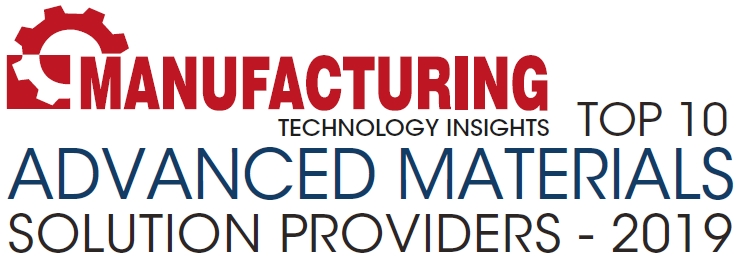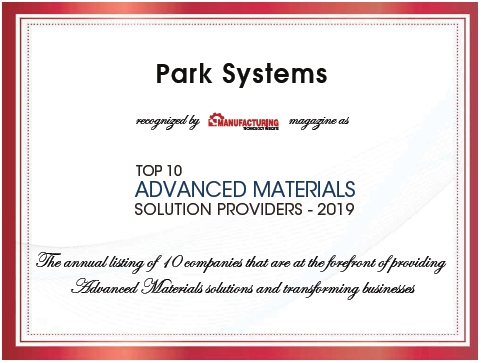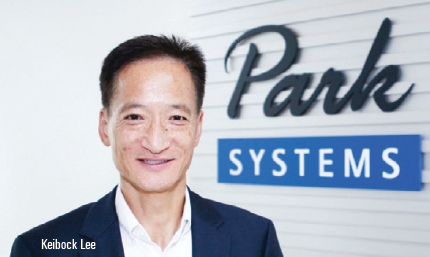
NOVEMBER - 01 - 2019, ISSN 2644-2493, MANUFACTURINGTECHINSIGHTS.COM
Changes are sweeping the world of manufacturing as advanced materials and innovative production technologies are maturing. Remarkable advances in technology in the advanced materials landscape has been made in the past 25 years. Opening a promising avenue in the manufacturing marketplace are the new structural materials—metals, ceramics, polymers, and their composites. Dealing with a wide range of various production processes and products, the manufacturing industries demand sustainability and durability, which leads to the development of advanced technologies. Development of new advanced materials can be time-consuming and financially liable; hence, the industries resort to tweaking their existing materials to create new ones with advanced capabilities.
In the wake of these technology transitions, we are glad to feature top companies that are continually proving their mettle in the field of advanced materials solutions with several innovative technological capabilities and success stories up their sleeves. With the digital manufacturing techniques gaining adoption, the manufacturers are discovering new ways to compete, innovate, and grow profitably even as they face challenges from volatile energy costs, workforce shortages, proliferating regulations, and a host of evolving risks. Meanwhile, industries that are enabled by advanced materials are particularly well poised to capture value in current global markets through the development of new functional solutions to address global unmet wants and needs.
We hope the issue of Manufacturing Technology Insights helps you build the partnership you and your firm needs to enable technology-driven advanced materials.
We present to you Manufacturing Technology Insights’ “Top 10 Advanced Materials Solution Providers - 2019.”

Park Systems
Defects on Semiconductor Wafers Can’t Hide from Park Systems’ Automated Defect Review Atomic Force Microscopes
In 1965, Moore’s Law predicted that the number of transistors on a microchip would double every two years, while the cost of computers would be halved. Moore’s Law indeed proved to be true. Today, the ever-condensing semiconductor device geometries—shrinking below 14 nm—are setting the stage for smaller microchips packed with more features. While this miniaturization creates more products like wearables and artificial intelligence computing, the challenge facing semiconductor manufacturers is how to keep up the quality production yield when traditional methods of inline defect review are inadequate. The automated atomic force microscopy (AFM) is rapidly becoming the go-to technology, providing data-rich nanoscale resolution 3D images to help in these detect reviews compared to optical and 2D SEM-based techniques. Researchers and engineers are turning to AFM technology to increase their productivity and the quality of their work, and they are collaborating with CA-based Park Systems—a leading manufacturer of AFM that leads the industry with a dominant market share in the semiconductor and hard disk drive market. Park’s automated AFM is now deployed in 9 out of 10 of the largest semiconductor manufacturers in the world.

“Park Systems AFM inline systems solves the quality assurance challenges of ever-shrinking device manufacturing with its automated AFM with ADR—automatic defect review,” states Keibock Lee, president and general manager of Park Systems. With Park’s Automated Defect Review AFM system, a 24-hour inline production line defect review process saves time and money. The AFM operates on its own at an unprecedented level of accuracy with nanometrology imaging in 3D with detailed topographic information of even the smallest defects.
“While the best quality, highest-resolution data images have always been a hallmark of Park Systems’ patented True Non- Contact AFM, the ADR has bolstered our proven capabilities to match the increasing needs of the industry,” comments Lee. The ADR AFM uses the True Non-Contact scanning technology, which allows users to take repeated highest-resolution measurements by preserving tip sharpness and not damaging the sample surface. This ‘Non-Contact’ approach allows for high-resolution, accurate, and repeatable scans with minimum operational cost of tips.
Following the success of ADR AFM, the company has now subsequently brought a similar approach to reviewing defects of interest (DOI) on silicon wafers up to 300 mm. Finding silicon wafer DOI is challenging. The unique crystalline structures of all bare silicon wafers are often prone to small defects in the range of one nanometer or smaller. Semiconductor device manufacturers need to determine the threshold sizes of wafer DOI along with its shape and depth characteristics. Lee states, “With Park’s turnkey ADR AFM solution, manufacturers can attain high-quality 3D data of wafer DOI with unprecedented speed and accuracy.” The non-contact approach to AFM does not alter the wafer’s surface in any way, which means every wafer reviewed can go for further processing as needed. That being said, extreme ultraviolet (EUV) reticle photomasks in Park Systems’ AFMs make them a critical instrument for prototype researches of 450 mm wafers in the current semiconductor industry.
Displaying such revolutionary competencies in AFM technology, Park Systems, with an eye toward the future, continues to develop more innovative and enhanced versions of AFM solutions. Living up to the innovative spirit of Dr. Sang-il Park, one of the earliest developers of atomic force microscopy and the founder and CEO of Park Systems, “We are constantly creating best-in-class tools that allow our customers to focus on doing incredible work, knowing that their measurements are accurate, repeatable, and easy to obtain,” concludes Lee.
